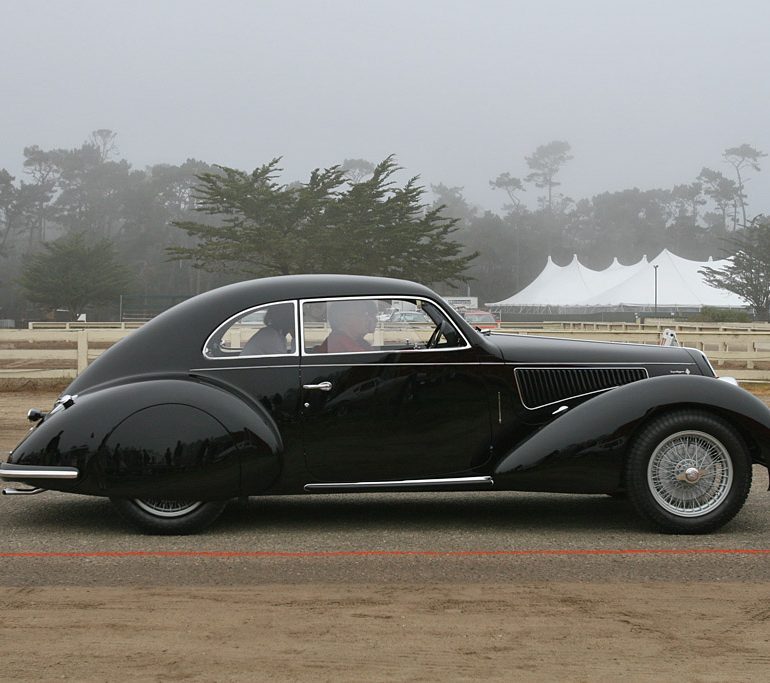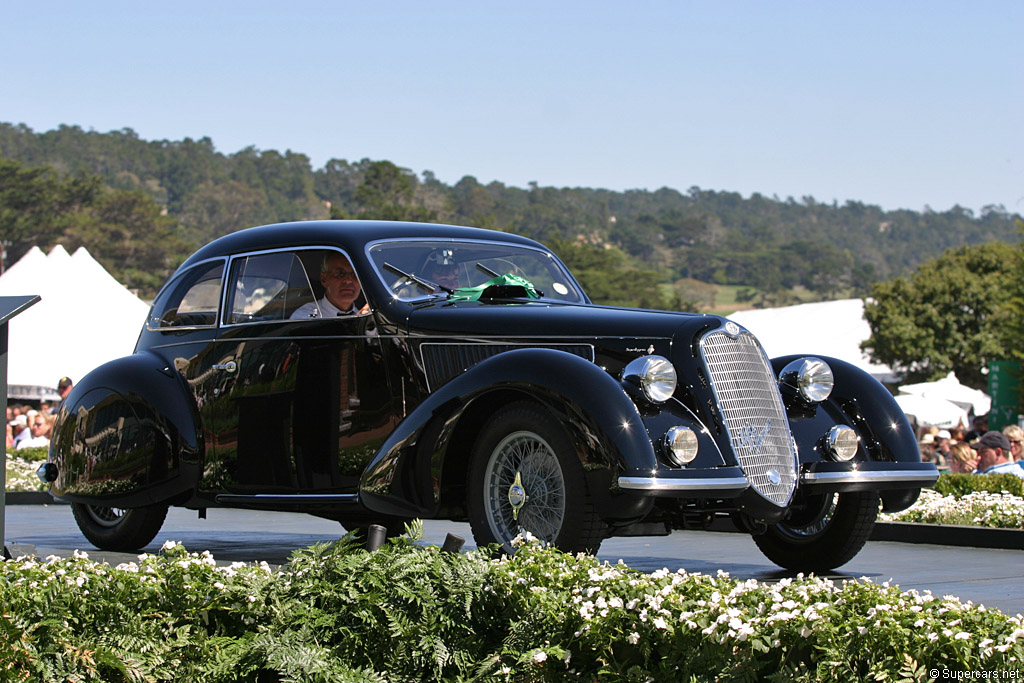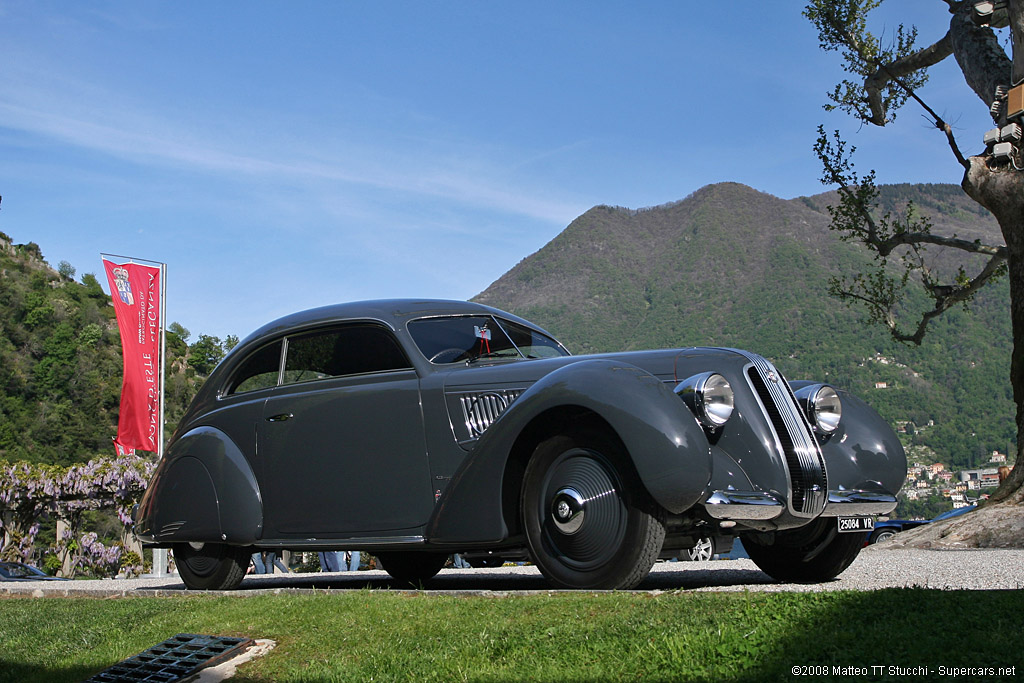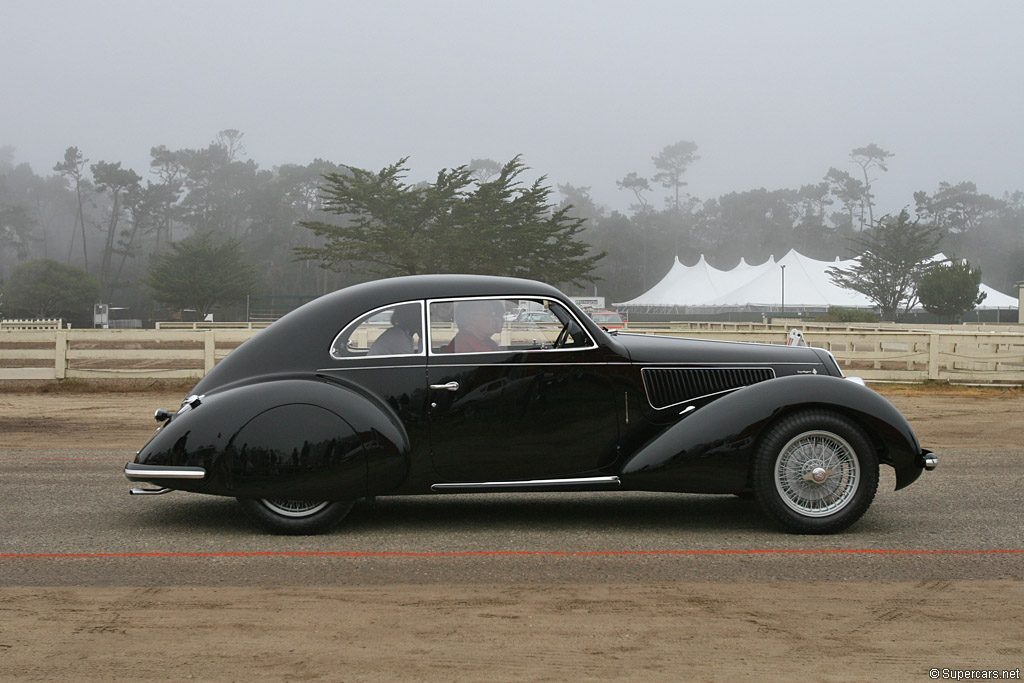1935 Alfa Romeo 6C 2300 Mille Miglia
As a replacement to the 6C 1750 and interim 6C 1900, the 2300 combined grand touring and race car engineering. The real highlight of the car was its Vittorio Jano-designed engine, which can be traced back to the 6C 1500 with its DOHC valvetrain setup. This exceptional engine was mounted to a single disc clutch with 4 forward gears having synchronization on the 3rd and 4th gears.
When it was launched in 1934, the standard Turismo model produced 70 bhp. A short wheel base Granturismo model produced 76bhp, while the top of the range Pescara & Mille Miglia versions had 95 bhp thanks to twin Solex 35-40 FH Carburetors.
As a novelty, the rear friction dampers could be hydraulically controlled from the driving position.
The model’s competition debut came at the 1st Tour of Italy in 1934 but that car’s real motoring success came at the Pescara 24-hour race when three 6C 2300 with more powerful engines and special Touring bodywork claim the first three places overall. Named after the success, all dual carburetor versions of the 6C 2300 were called ‘Pescara’ afterwards. Some cars with three carbs are known as Mille Miglia, but a 6C2300B with two carbs actually won the event.
From 1935 to 1937 all three versions of the 62 2300, the Touring, Granturismo and Pescara, would be fitted, for the first time in Europe, with four wheel, independent suspension. These were identified as 2300Bs. Front suspension was from the Grand Prix cars, using trailing arms and coil springs/hydraulic damper units while the rear end was given swing axles controlled by torsion bars.
1935 Alfa Romeo 6C 2300 Mille Miglia Gallery
See full 1935 Alfa Romeo 6C 2300 Mille Miglia Gallery here
In Detail
| engine | Cast Iron Inline-6 w/Aluminm Head |
| position | Front Longitudinal |
| aspiration | Natural |
| valvetrain | DOHC, 2 Valves per Cyl |
| fuel feed | Twin Solex 35-40 FH Carburetors |
| displacement | 2309 cc / 140.9 in³ |
| bore | 70 mm / 2.76 in |
| stroke | 100 mm / 3.94 in |
| compression | 7.8:1 |
| power | 70.8 kw / 95 bhp @ 4500 rpm |
| specific output | 41.14 bhp per litre |
| bhp/weight | 74.22 bhp per tonne |
| body / frame | Aluminum or Steel Body on Box-Type Chassis |
| driven wheels | RWD |
| front brakes | Drums |
| rear brakes | Drums |
| steering | Worm & Wheel |
| f suspension | Wishbones w/Coil Springs |
| r suspension | Swing Axles w/Friction Shock Absorbers |
| curb weight | 1280 kg / 2822 lbs |
| wheelbase | 2925 mm / 115.2 in |
| front track | 1420 mm / 55.9 in |
| rear track | 1420 mm / 55.9 in |
| transmission | 4-Speed Manual |
| top speed | ~145 kph / 90.1 mph |







